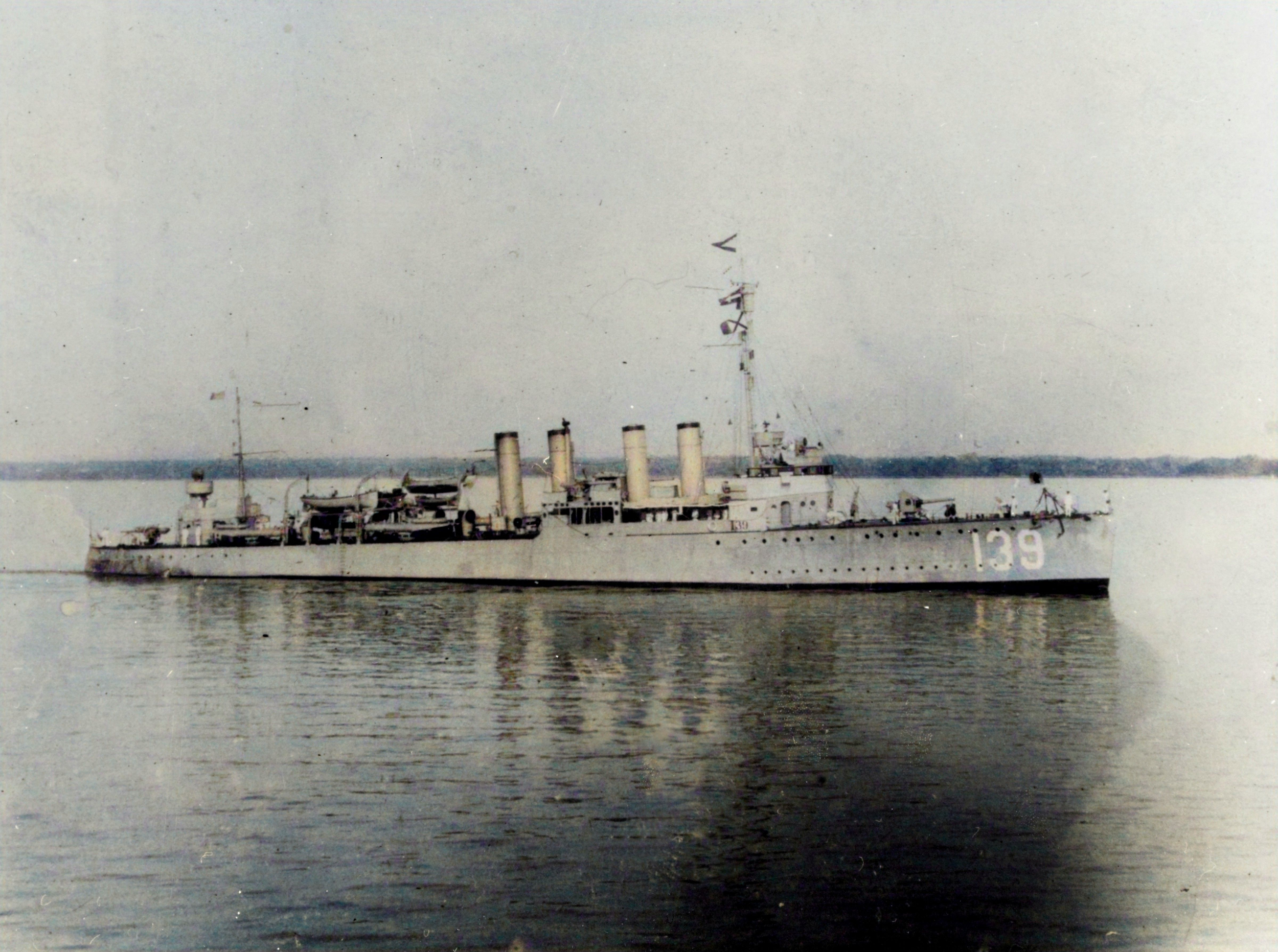Field Trip: First Blood at Pearl Harbor
On the morning of 7 December, 1941, the destroyer USS Ward fired the first American volley of the war, sinking a Japanese midget submarine that was trying to enter the harbor. Despite the warnings thus sent, they went unheeded until the Japanese began to attack the harbor by air an hour later.
The USS Ward
Sunday, December 7, 1941 had not yet dawned on the calm waters of Hawaii as the destroyer USS Ward (DD-139) ploughed ahead at fifteen knots, assigned a routine patrol pattern near the entrance to the US Pacific Fleet anchorage at Pearl Harbor. She was following the minesweeper USS Condor, when the smaller ship spotted a periscope in the water and at 0357 flashed a signal to the destroyer via her signal lamp. The commanding officer of Ward, Lt. William Outerbridge, immediately ordered general quarters and commenced a sonar sweep, but encountered no contacts. No report of the sighting was made to headquarters in the harbor, and the alert was stood down at 0435. Tensions at the time were high with the Empire of Japan, and false alarms were very common among the nervous sentries.
The gun with its crew aboard the USS Ward
Hours later, at 0630, the supply ship USS Antares was moving to enter the harbor when her commander, Commander Lawrence Grannis, spotted something in in the water 1500 yards from his ship. The object, looking something like a small conning tower, was quickly reported to the nearby Ward, whose helmsman quickly sighted the contact. Confirmed by Lt. J.G. Oscar Goepner, the watch officer, and promptly roused Lt. Outerbridge to the deck. Another order for general quarters rang out, and the Ward’s crew made ready the ships guns as the ship accelerated to flank speed. Pulling within 50 yards, Outerbridge gave the order to fire, with the first round passing over the conning tower and landing in the sea. The second round was a direct hit on the conning tower, causing the submarine to heel over and begin to sink. The Ward passed over the foundering submarine and dropped a series of depth charges, and immediately afterward radioed Pearl Harbor of the submarine’s destruction.
The US Pacific Fleet burns at Pearl Harbor
Despite this report, doubts remained that this was merely the actions of an overly eager crew and a new skipper (Outerbrige had taken command of Ward only two days prior). Admiral Husband Kimmel, the commander of the Pacific Fleet at Pearl Harbor, elected to wait for confirmation of the action, and as such no immediate action was taken (as mentioned above, reports of submarines and similar had been coming in with great frequency over the past weeks, creating something of a “cry wolf” effect). As a result, no immediate warning was issued, and soon the Japanese struck at the fleet, destroying the bulk of the US battlefleet in what President Roosevelt would declare the “Day of Infamy”.
Emplaced on a simple concrete pad on the grounds of the Minnesota State Capitol, this 4 inch gun fired the first American shots of the Second World War
Even after the attack had ended, doubts remained over whether the Ward had actually destroyed a Japanese submarine, although her crew remained adamant. The ship herself was converted in 1942 into a high speed transport, and in this role she met her end on 7 December 1944. On that third anniversary of the Pearl Harbor Attack the Ward was hit by Japanese kamikaze aircraft operating off of the Philippines, and had to be scuttled with gunfire from the USS O’Brien, which was, ironically, under the command of Outerbridge.
The breech of the weapon
During the conversion of Ward into a high speed transport her No.3 gun was removed and set aside for preservation in recognition for firing the first American rounds of the War on Japan. The first shot, which had missed, had been fired from the No.1 gun, but the second, fired from the No.3, had hit the submarine (finally confirmed in 2002 when the wreck of the sub was found, with a perfect hit on her conning tower). The weapon was manned by a crew of Minnesota Naval Reservists at the time, and as a result it was decided that the gun would be donated to the State of Minnesota for conservation and display.
The gunner’s view from the weapon, where once a Japanese midget submarine was lined up decades prior
The gun was installed on the grounds of the Minnesota State Capitol on 10 May, 1958, commemorating the centennial anniversary of Minnesota’s statehood. It remains there to this day, standing sentinel next to the Veteran’s Affairs building and looking out over Interstate 35 rather than the waters of the Pacific.
The plaque on the side of the weapon, commemorating its history
Two plaques are present on the gun. A small one is located on the left hand side, listing the crew of the gun on 7 December and stating that it was selected for preservation, while another on the right hand side commemorates its installation as a memorial in St. Paul. A stone monument is also nearby, in tribute to the men of the Minnesota Naval Reserve that served on the ship.
Another plaque, added when the gun was installed on the Minnesota State Capitol Grounds
This monument, perhaps bypassed by many as just another old cannon on the side of a road, is one of the most significant of its type in the country, bearing the responsibility of achieving the first American kill of the Second World War. The author visited this site on the morning of 25 October, 2022.







